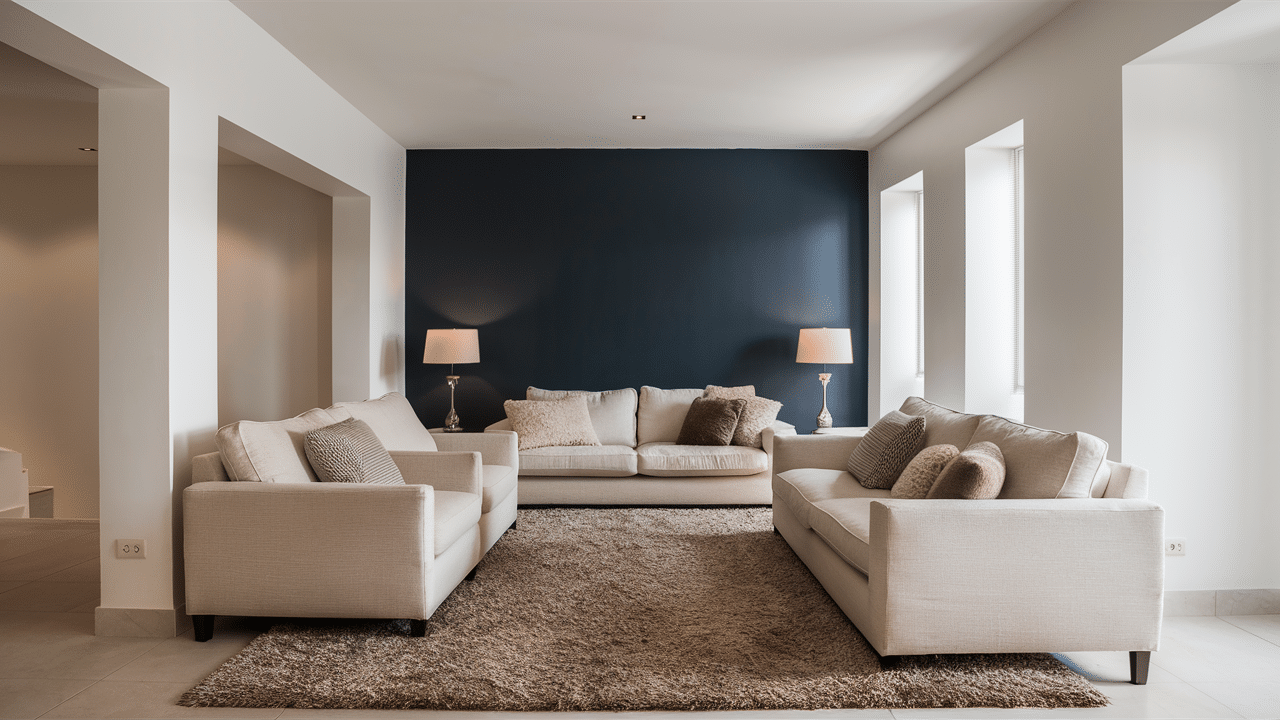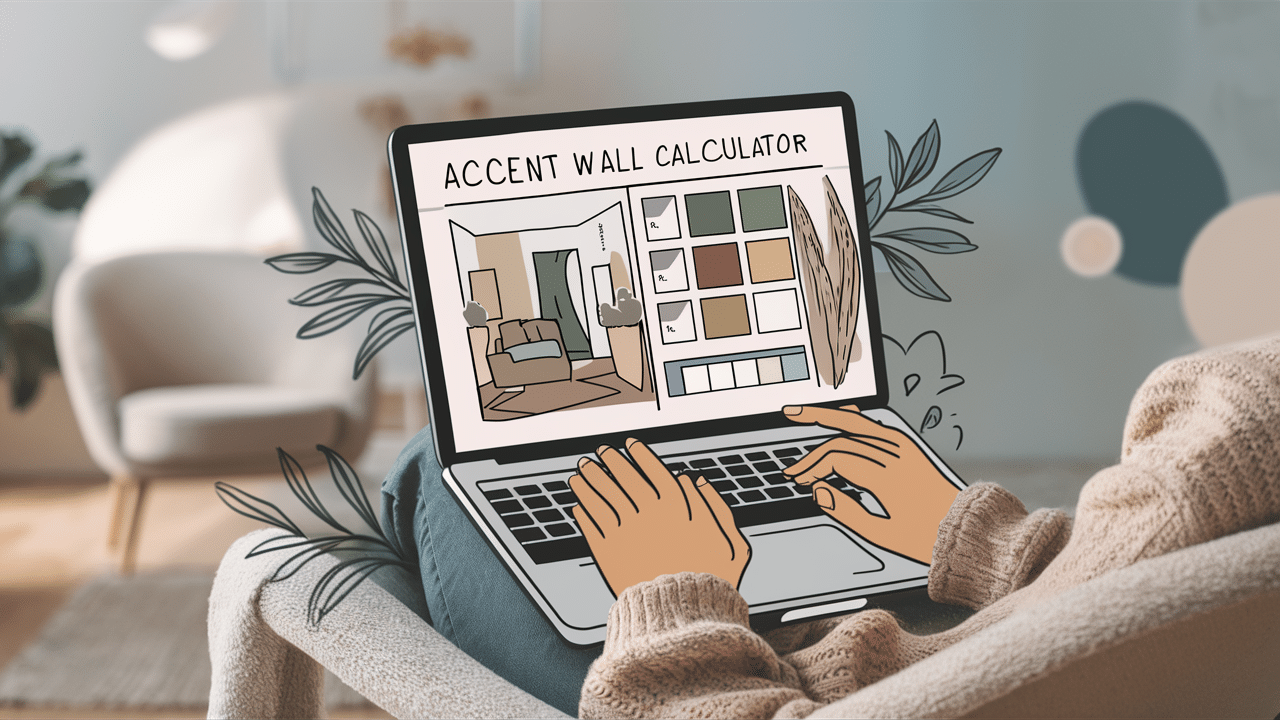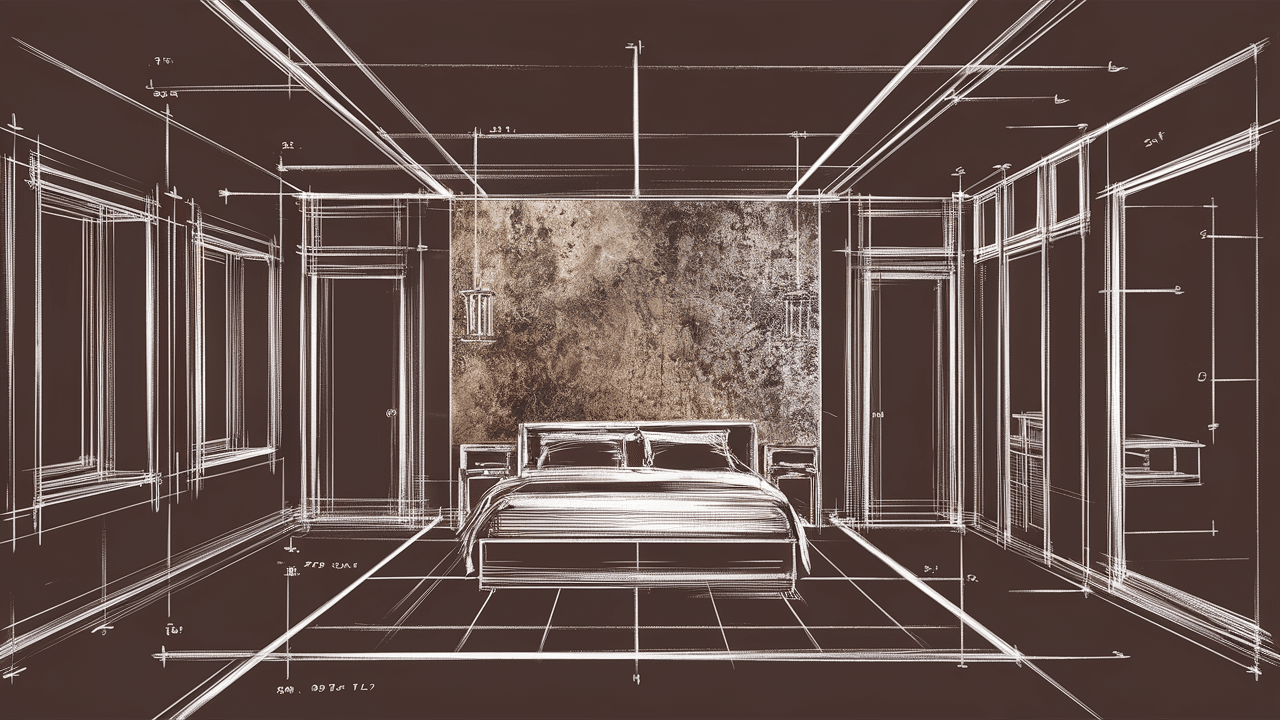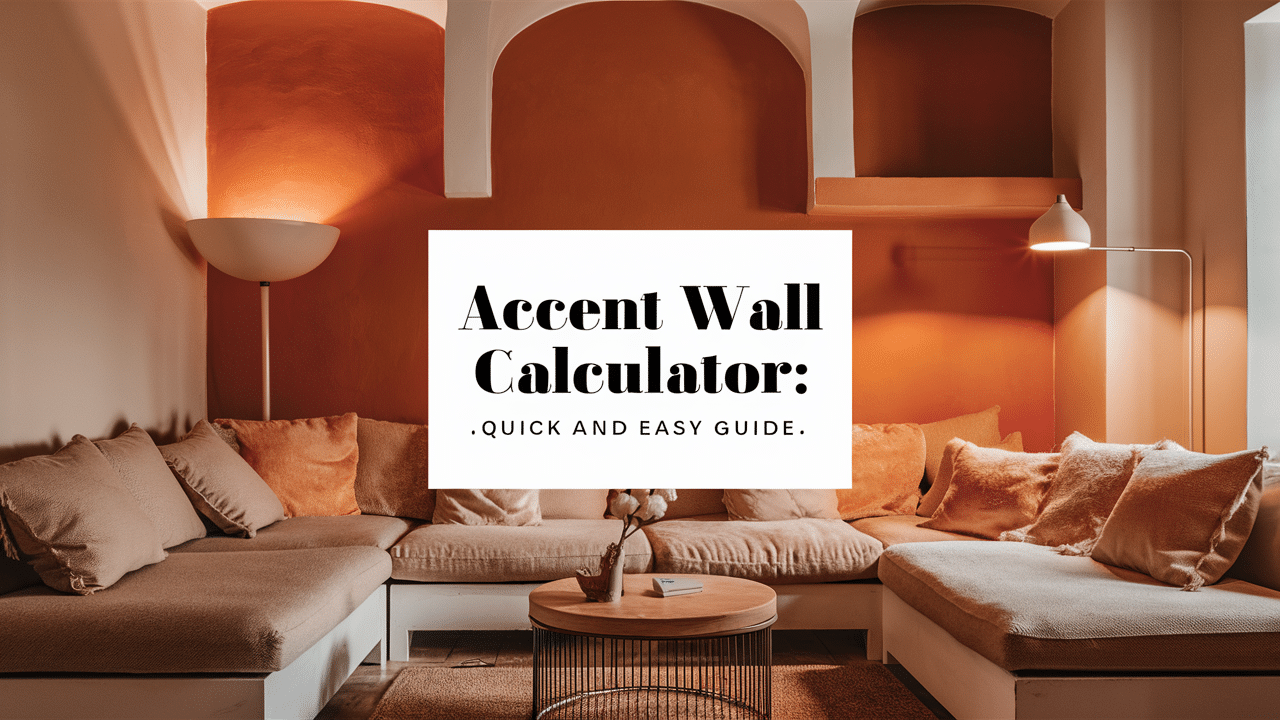Choosing the right size for your accent wall can be tricky. You want it to stand out but not overwhelm the room. That’s where an accent wall calculator comes in. It helps you figure out the perfect size for your wall, making your design process easier.
In this guide, I’ll show you how to use an accent wall calculator step by step. It’s a simple tool that takes the guesswork out of your decision. By the end, you’ll know exactly how big or small your accent wall should be to fit your room perfectly.
It’s all about making sure your wall gets the attention it deserves without crowding the space. Let’s start planning your accent wall with confidence!
What is an Accent Wall?

An accent wall is a wall in a room that stands out because of a different color, texture, or pattern. It’s often used to make a bold statement in a space. You may see accent walls in living rooms, bedrooms, or even hallways.
The key to a successful accent wall is size. It should stand out but not overwhelm the room. Too big, and it will make the room feel small. Too small, and it won’t have the impact you’re hoping for. This is why using an accent wall calculator is so helpful—it helps you get the perfect size every time.
Why Use an Accent Wall Calculator?

An accent wall calculator is an easy tool for determining the right size for your accent wall based on the size of your room.
Here are some reasons why you should use an accent wall calculator:
-
Accurate measurements: It helps you measure the space quickly and accurately.
-
Perfect balance: Ensures your accent wall fits well in the room, neither too big nor too small.
-
Less guesswork: It saves you from guessing and making mistakes that can be costly or time-consuming.
-
Saves time: Helps you get the right dimensions without having to redo anything.
Using a calculator takes the stress out of deciding what size wall will look best.
What to Consider Before Using the Accent Wall Calculator

Before you start using the calculator, there are a few things to consider about your space.
Room Size and Shape
The size of the room plays a big role in the size of your accent wall. A small room needs a smaller accent wall to keep the space feeling open. A large room can handle a bigger accent wall to create impact.
-
Small rooms: Stick with a smaller accent wall to avoid making the space feel cramped.
-
Large rooms: You have more freedom to experiment with larger accent walls without overwhelming the space.
Purpose of the Accent Wall
Think about the effect you want to create with your accent wall. Are you trying to highlight a certain feature, like a fireplace or a piece of artwork? Or do you just want to add color or texture?
-
Highlighting a feature: Focus on the wall that’s closest to the feature you want to highlight.
-
Adding color/texture: Choose a wall that makes sense in terms of the room’s layout.
The purpose will guide your decision on where and how big your accent wall should be.
How to Measure Your Space for the Accent Wall Calculator

Now, let’s talk about the measurements you’ll need to use the calculator. Don’t worry; this is simple!
Step 1: Measure the Wall
Start by measuring the width and height of the wall you want to turn into an accent wall.
-
Width: Measure the full length from one side of the wall to the other.
-
Height: Measure from the floor to the ceiling.
Measure carefully and round up to the nearest inch to get an accurate result. This is the most important measurement for the calculator.
Step 2: Calculate the Room’s Dimensions
Next, you need to measure the entire room to get the dimensions.
-
Room width: Measure from one wall to the opposite wall.
-
Room length: Measure the length of the room (from one end to the other).
-
Room height: Measure the ceiling height (usually the same as the wall height).
You’ll use these room dimensions to calculate the size of the accent wall and how much space it will take up in the room.
Step 3: Check the Wall’s Placement in the Room
Think about where the wall sits in the room. If the wall you choose for your accent wall has windows or doors, consider how they’ll affect the overall design. You might need to adjust the size of the accent wall to work around these features.
Using the Accent Wall Calculator
Now that you have all your measurements, it’s time to use the accent wall calculator.
How the Calculator Works
The accent wall calculator uses your room and wall measurements to suggest the best size for your accent wall. Most calculators will give you the following options:
-
Wall Percentage: The calculator may ask you what percentage of the wall you want to cover. Typically, it’s recommended to cover one-third to one-half of the wall for a balanced look.
-
Wall Size: It will use the dimensions of your room to recommend an ideal size for your accent wall.
-
Room Size: Some calculators also consider your room size to give you an accurate result that works with the overall layout of the space.
Once you enter your measurements and preferences, the calculator will give you a number, usually in square feet, that represents the best size for your accent wall.
Example: Let’s say your room is 12 feet wide, 15 feet long, and the ceiling is 8 feet high. You choose a wall that is 10 feet wide by 8 feet high.
The calculator might suggest a wall size of around 30–40 square feet, which is about one-third to one-half of the wall’s total size. This will give you a balanced look without overwhelming the space.
Tips for Making Your Accent Wall Look Great
Once you’ve determined the perfect size for your accent wall, some tips to help you create a stunning look are:
1. Choose the Right Color
-
Bold colors: Use darker colors like navy or charcoal for a dramatic effect.
-
Soft tones: Light colors like pastel blue or soft gray create a calming effect.
-
Accent wall in patterns: Stripes, geometric shapes, or a textured wallpaper add interest.
2. Focus on the Room’s Lighting
Good lighting can make a big difference in how your accent wall looks. Make sure the area gets enough light, or add a light fixture to highlight the wall.
-
Natural light: Accent walls with natural light will look brighter and more vibrant.
-
Artificial lighting: Use spotlights or wall sconces to direct light to the wall.
3. Pair with Simple Decor
When designing your accent wall, don’t overcrowd it with too many things. Let the wall be the focal point, and keep the rest of the decor simple.
-
Art: Hang a piece of artwork or a mirror that complements the color of the accent wall.
-
Shelving: Add floating shelves with plants or small decor pieces.
Common Mistakes to Avoid
While using an accent wall calculator helps ensure the right size, there are a few common mistakes to keep in mind when designing your accent wall:
- Choosing the Wrong Wall: Not all walls are right for accenting. Avoid walls with too many doors, windows, or other features that could make the wall appear cluttered.
- Overdoing the Size: If your room is small, avoid making the accent wall too large. It can overwhelm the space and make it feel cramped. Stick with a smaller, more subtle accent wall.
- Ignoring the Room’s Flow: The accent wall should work with the rest of the room. Avoid placing it in a way that makes the room feel unbalanced. Consider the furniture placement, the flow of traffic, and the room’s layout.
How to Know If Your Accent Wall Is the Right Size
Once you’ve used the accent wall calculator and applied your design, step back and look at the wall. How to know if it’s the right size:
-
Balance: The wall should stand out but not feel too big for the space.
-
Harmony: It should fit well with the room’s design and not overpower other features.
-
Comfort: Does it feel cozy and inviting? The right-sized accent wall will make the room feel complete.
Conclusion
An accent wall can bring life and personality to any room. Finding the right size for your accent wall is crucial to making it stand out without overpowering the space. Using an accent wall calculator makes the process easy and helps you get the perfect dimensions for your room.
By measuring your space and inputting your preferences, you can create a balanced and welcoming focal point. Remember to consider the room size, wall features, and the effect you want to create.
With these simple steps, you can confidently design an accent wall that fits perfectly into your space and enhances your home’s look. Enjoy the process, and make your home feel more inviting with a beautiful accent wall.

